I have some file.csv. If I open it by double-click, it opens in Excel with the proper setup (there are no semicolons and each "line" of data is correctly showing up in the expected columns).
Example result:
However, in VBA:
'Workbooks.OpenText Filename:=f, StartRow:=2, DataType:=xlDelimited, Semicolon:=True, ConsecutiveDelimiter:=True, TextQualifier:=xlTextQualifierNone
'Workbooks.OpenText Filename:=f, DataType:=xlDelimited, Semicolon:=True
'Workbooks.OpenText Filename:=f, DataType:=xlDelimited
'Workbooks.Open Filename:=f, Format:=xlDelimited, Delimiter:=Chr(34)
'Workbooks.Open Filename:=f, Format:=xlDelimited, Delimiter:=";"
Workbooks.Open Filename:=f, Format:=xlDelimited
Dim s As String
s = """" & ";" & """"
Workbooks.Open Filename:=f, Format:=xlDelimited, Delimiter:=s
'Workbooks.OpenText Filename:=f, DataType:=xlDelimited, OtherChar:=s
'Workbooks.OpenText Filename:=f, DataType:=xlDelimited, OtherChar:=";"
I've tried the lines above (and a number of others before I started keeping all my attempts) as well as without any arguments at all, but no matter what I do, the file will open without the text being split as it does when I double-click the file.
Example result:
So in summary; double-clicking the file parses the file correctly, Open and OpenText does not. Surprisingly, the worksheet looks identical regardless of using Open or OpenText.
A similar problem is described in this question, though it remains without a proper answer. The difference between our cases is that Excel won't parse anything for me, where it seems like it does parse large parts of the file for OP.
I just want to open the workbook and iterate over one of the columns, then close it. I have a couple of workarounds in mind, so I will be able to solve it one unnecessarily roundabout way or another.
So far I have found these ideas:
- Renaming
.csvto.txtand usingOpenText - Using
QueryTableimport - Iterating over the borked file as it appears using
OpenTextand usingLEFT/MID/RIGHTto get at the desired column(s) - Binary
OpenandSpliteach line into an array
Desired answers:
- How to achieve this solution using
Workbooks.OpenTextor similar native function. - Explanations (or maybe even ideas) as to why
Workbooks.OpenTextand/or the most appropriate native function similar to it cannot achieve the desired result when Excel itself does seem to be capable of it. - Other workarounds.

